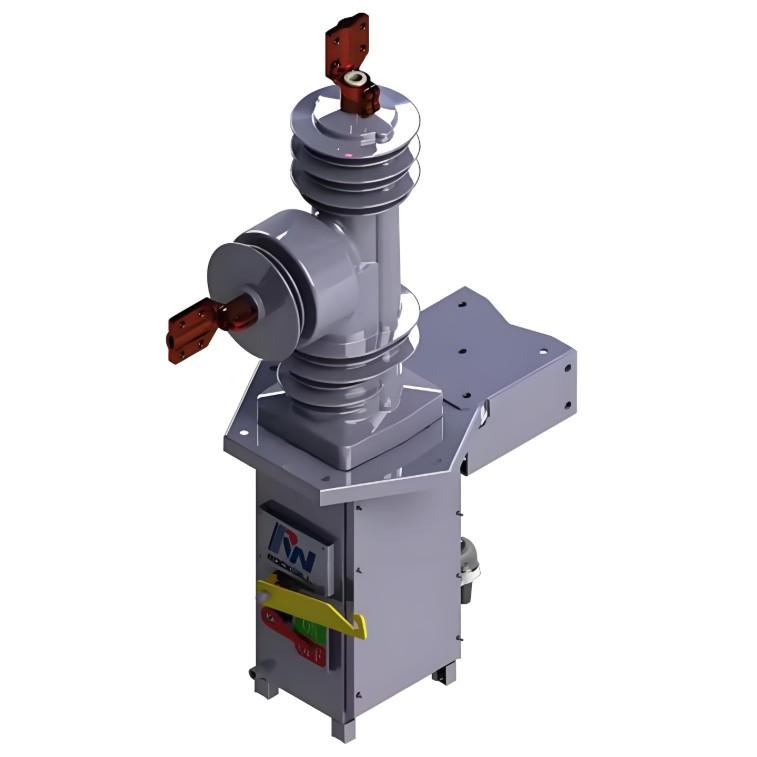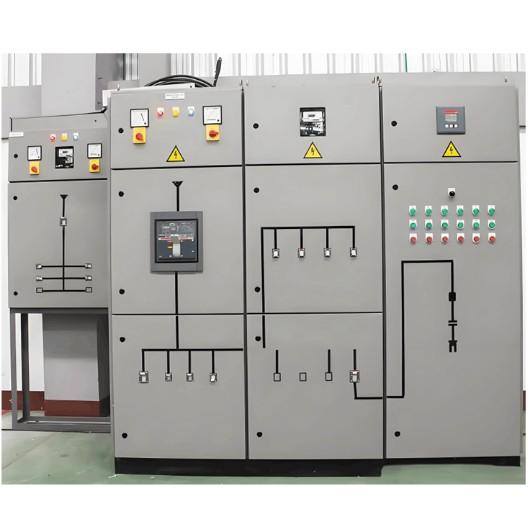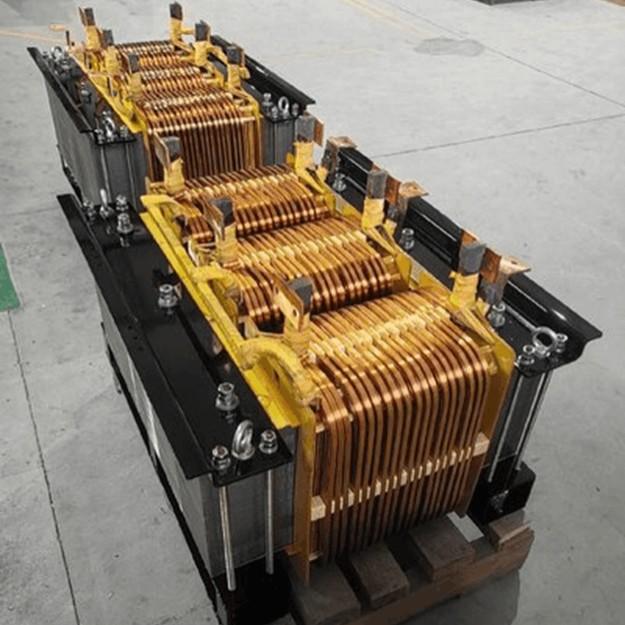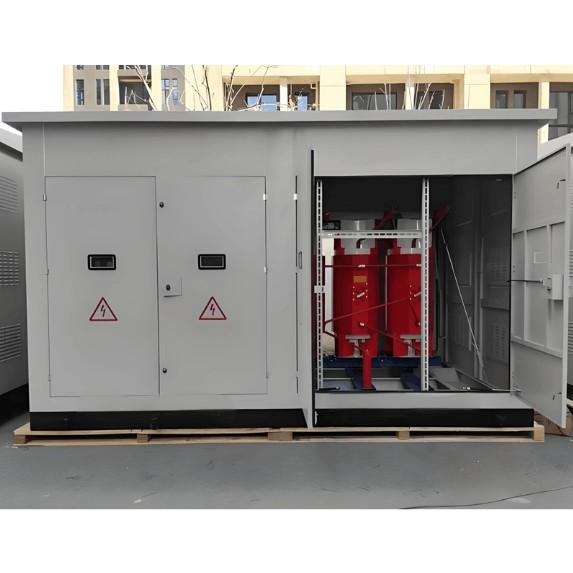I. Pagsasaliksik ng Background
Ang Pangangailangan sa Pagbabago ng Sistemang Paggamit ng Kapangyarihan
Ang mga pagbabago sa istraktura ng enerhiya ay nagbibigay ng mas mataas na pangangailangan sa mga sistemang kapangyarihan. Ang mga tradisyunal na sistemang kapangyarihan ay lumilipat patungo sa bagong henerasyon ng mga sistemang kapangyarihan, at ang mga pangunahing pagkakaiba sa pagitan nila ay inilarawan bilang sumusunod:
| Dimensyon |
Tradisyunal na Sistemang Kapangyarihan |
Bagong Uri ng Sistemang Kapangyarihan |
| Porma ng Teknikal na Batayan |
Mekanikal na Sistema ng Electromagnetic |
Dinomina ng Mga Makina ng Synchronous at Equipment ng Power Electronics |
| Porma ng Gawaing-Side |
Punong-Punong Termal na Kapangyarihan |
Dinomina ng Hangin na Kapangyarihan at Photovoltaic na Kapangyarihan, may Mga Mode ng Centralized at Distributed |
| Porma ng Grid-Side |
Singlyong Malaking Grid |
Kasama ang Malaking Grid at Microgrid |
| Porma ng User-Side |
Tanging Konsumer ng Kuryente |
Ang mga User ay Parehong Konsumer at Prodyuser ng Kuryente |
| Paraan ng Balanse ng Kapangyarihan |
Ang Paggawa ay Sumusunod sa Load |
Interaksiyon sa Gitna ng Source, Grid, Load, at Energy Storage |
Ⅱ.Pangunahing Mga Application Scenario ng Solid-State Transformers (SST)
Sa ilalim ng background ng mga bagong sistemang kapangyarihan, ang aktibong suporta, regulasyon ng grid integration, flexible interconnection, at interaction ng supply-demand ay naging pangunahing pangangailangan para sa spatiotemporal energy complementarity. Ang mga SST ay nakapagpaparating sa lahat ng yugto—generation, transmission, distribution, at consumption—mayroong partikular na aplikasyon bilang sumusunod:
Generation Side:Direct-connected grid-tied converters, grid-forming equipment, medium-voltage DC transformers for integrating wind, solar, and storage.
Transmission Side:Medium- at high-voltage DC distribution transformers, flexible DC interconnection devices.
Distribution Side:Medium- at low-voltage flexible interconnection units, flexible distribution power electronic transformers (PET), DC transformers for electrified transportation.
Consumption Side:DC power supplies for hydrogen/aluminum production, direct-connected charging systems, direct-connected data center power sources.
(1) Rail Transit Traction — 25kV Traction PETT
Ang mga converter system na batay sa SST ay core equipment para sa pagtatayo ng susunod na henerasyon ng mga grid ng kapangyarihan.
Pangunahing Teknolohikal na Breakthroughs:
High-isolation high-frequency topology conversion at high-power high-frequency transformer technologies
High-voltage (AC25kV direct connection) at high-insulation technology under compact design (withstand voltage: 85kV/1min)
Adaptation to strong impact and vibration environments, efficient phase-change cooling
High-frequency, high-efficiency conversion topologies and driving techniques, high-frequency modulation control with smooth switching
Application Results:
Installed and tested on a 140 km/h EMU in 2020, outputting DC1800V
Rated efficiency of 96.7% (2% higher than existing systems), 20% increase in power density
Fully controlled grid side enables active filtering, reactive power compensation, zero magnetizing inrush current and no standby losses
World’s first 25kV-SST product to achieve vehicle-mounted dynamic testing
(2) Urban Rail Power Supply — Multi-port Energy Router for Metro Systems
Core Design:
Four-port isolated structure supporting traction power, auxiliary power, energy storage, and PV integration.
Key Technologies:
Two-level full-bridge LLC circuit topology based on IGBTs
SiC-based DAB circuit topology with series-parallel DC configuration
Soft-switching technology for power devices (branch efficiency ≥98.5%)
Shared 12-pulse transformer connected to AC grid, eliminating circulating currents when paralleled with diode rectifiers
Application Advantages:
Eliminates bulky line-frequency regenerative transformers; 26% smaller footprint, reducing installation space and construction costs
No transformer no-load losses, enabling retrofitting of existing lines
Integrates rectification, energy feedback, reactive compensation, and harmonic filtering for precise multi-port power flow control
(3) Charging & Battery Swap — 10kV Direct-Connected SST for EV Charging
System Configuration:
10kV medium-voltage direct connection, 1MVA capacity: 1 direct-charging module + 2 shared-bus networking modules
Configured with 300kW ultra-fast charging and six 120kW fast chargers; compatible with PV-storage integration and medium-voltage grid connection
Core Functions:
Integrates transformer and charging modules; wide-range voltage regulation enables direct charging, system efficiency ≥97% (peak 98.3%)
Provides grid support and power quality management, enabling bidirectional V2G (vehicle-to-grid) and G2V (grid-to-vehicle) interaction
(4) Park Power Supply — Low-Carbon Park Energy Router (PV-Storage-Charging Integration)
System Architecture:
10kV direct-connected energy router based on SST, featuring AC10kV and DC750V ports, with battery storage, DC charging interfaces, and DC protection devices on the output side.
Core Configuration:
315kW SST cabinet, 976.12kWp PV, 0.5MW/1.3MWh energy storage, 10 DC charging stations.
Application Value:
Reduces electricity costs through PV generation and energy storage peak-shaving arbitrage
Lowers station capacity demand, buffers grid impact, and offers excellent scalability
Output-side "solid-state DC circuit breaker + disconnect switch" combination ensures fault isolation for storage and charging stations
(5) Renewable Energy Integration — DC/DC Energy Router for PV-to-Hydrogen
Core Parameters:
5MW isolated DC/DC converter: input DC800–1500V, output DC0–850V, connected to hydrogen electrolyzer busbar
Single cabinet capacity: 3/6MVA, scalable from 3–20MVA; output voltage adaptable to DC0–1300V/2000V
Technical Advantages:
Reduces conversion stages compared to AC transmission; overall efficiency 96%–98%
High-frequency isolated DC transformers with flexible series-parallel topologies, suitable for PV, storage, rail power, hydrogen/aluminum production
Modular, configurable platform tailored to diverse industry-specific DC grid needs
(6) Distribution Network Optimization
Medium- at Low-Voltage Flexible Interconnection Device:
Addresses load imbalance, rising distributed PV, EV charger expansion, and reliability enhancement
Normal operation: asynchronous grid interconnection with active/reactive power flow control, improved renewable integration, and power quality isolation
Fault condition: rapid isolation and automatic switchover to prevent outages
10kV Direct-Connected Energy Storage System:
Medium/high-voltage grid connection reduces line losses
Two-stage conversion enables wide-range voltage regulation
Modular PCS and battery configuration
More flexible capacity vs. cascaded H-bridge topology, ensuring battery insulation safety and full-chain power flow control
(7) Grid Connection on Generation Side — 10kV Direct-Connected Photovoltaic New Grid Interface
Technical Features:
High-frequency isolation + cascaded CHB main circuit topology
Capacity: N×315kVA (scalable), output compatible with 1500V systems, efficiency >98.3%
Core Advantages:
Medium-voltage direct connection with isolated DC-DC performing MPPT (Maximum Power Point Tracking) and isolation/voltage regulation
Simplified two-stage architecture, highly efficient; responds directly to grid demands at 10kV level
Applicable to industrial, commercial, and rural distributed PV scenarios
(8) Load Side — Data Center Power Supply Based on SST
10kV Direct-Connection Solution:
2.5MW power (315kW × 8), system efficiency 98.3%, using high-frequency isolated conversion
400VDC DC ring network on DC side
Full PWM control achieves grid-side power factor >0.99, harmonics <3%
Future Outlook
Centered on AC/DC distribution networks, extending to renewables, transportation, power supply, energy management, and fault protection, SSTs enable an integrated system solution encompassing:
AC/DC hybrid power supply
Source-grid-load-storage integration
Optimized energy management and power flow dispatch
Supporting the construction of next-generation power systems.
III. Application Challenges and Discussion
(1) Relay Protection Compatibility Challenge
Research is needed on the compatibility between power electronic transformers and traditional distribution systems, especially for short-circuit, ground, and open-circuit faults. Clear control strategies during fault ride-through and coordination mechanisms for relay protection must be established.
(2) Dispatch, Management, and Monitoring Integration Challenges
The widespread adoption of new power electronic equipment raises adaptation issues in dispatch and monitoring, requiring solutions to three core needs:
Dispatch Rules & Market Mechanisms: The traditional “source-follows-load” logic cannot accommodate bidirectional “load-source-grid” interactions. Multi-directional power flow market mechanisms must be developed.
Standardization & Interoperability: Diverse device interface protocols lead to poor interoperability among vendors. Standardized communication protocols and control command sets must be promoted.
Cross-Regional Coordinated Dispatch: Flexible interconnection breaks traditional zoning boundaries. Unified responsibility allocation, reserve sharing, and cross-regional coordinated dispatch frameworks must be established.
These challenges require unified standards and monitoring execution mechanisms to resolve.





















